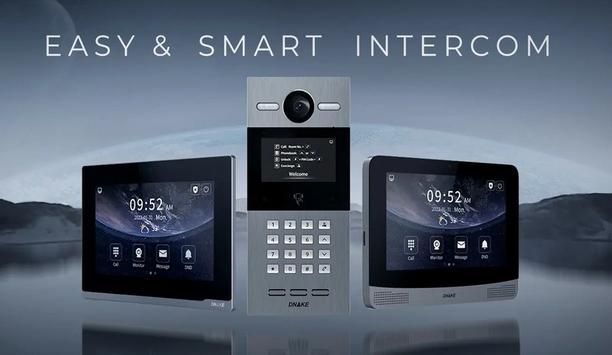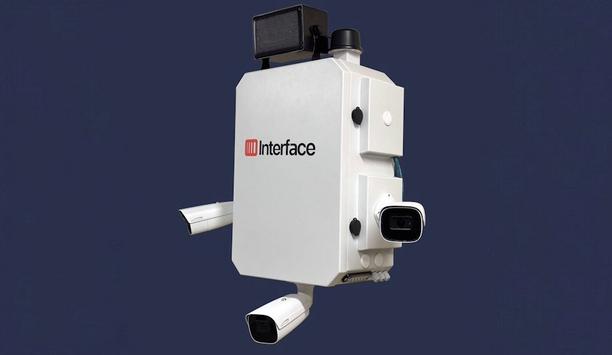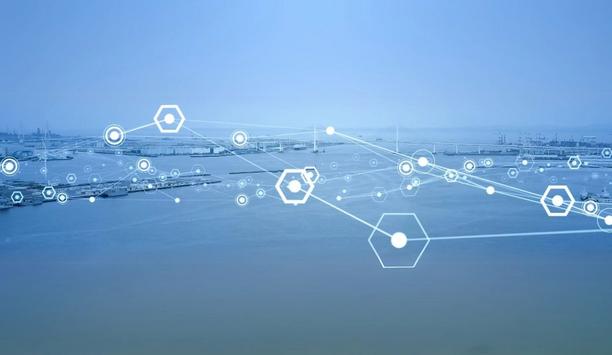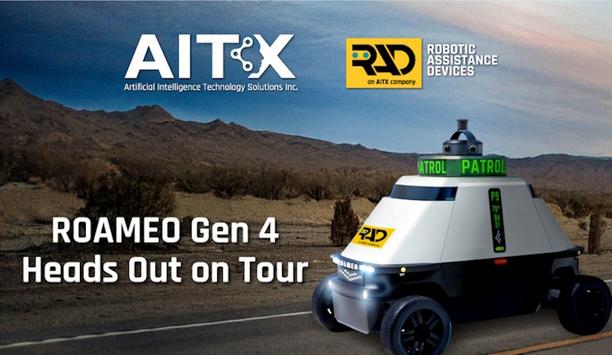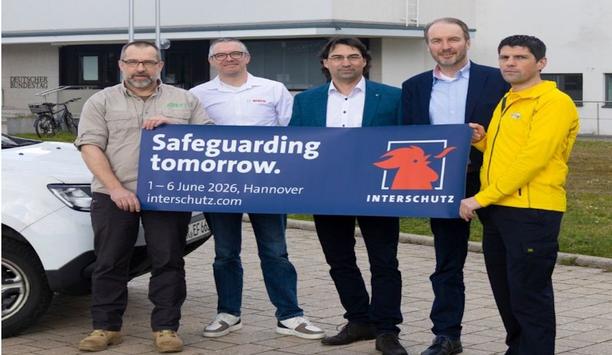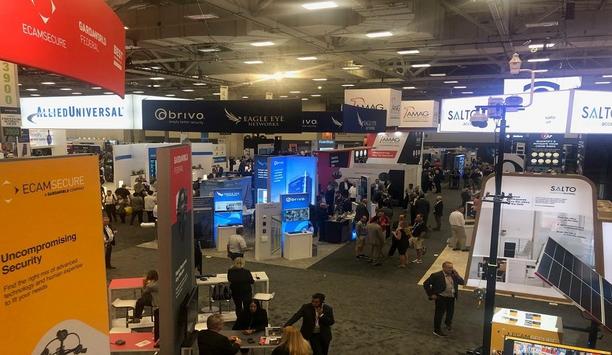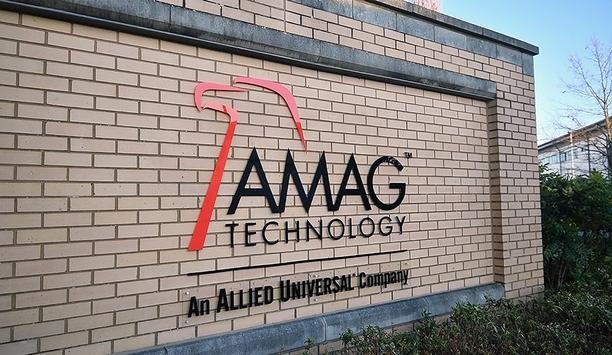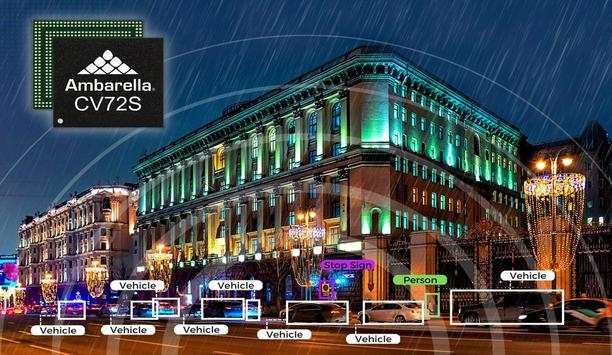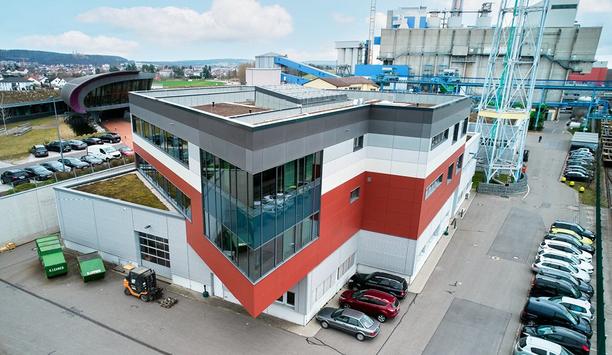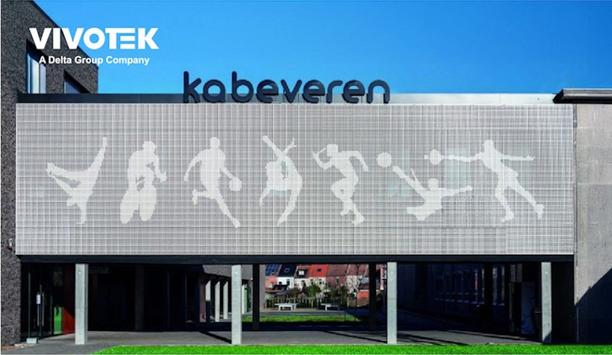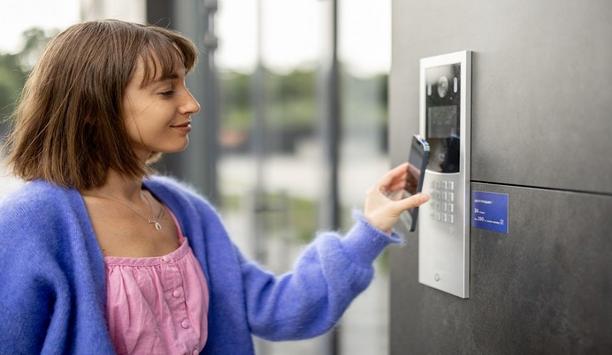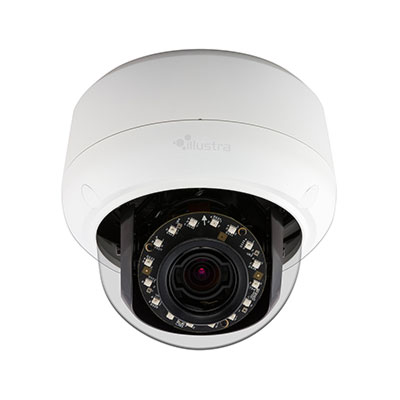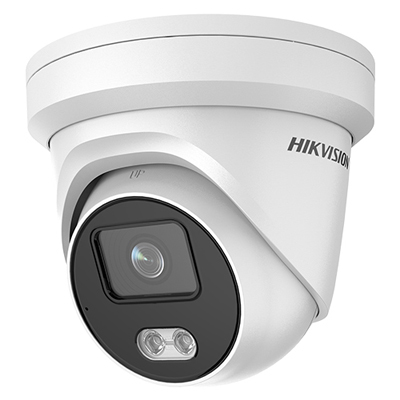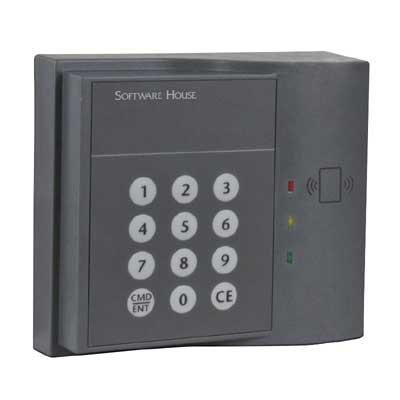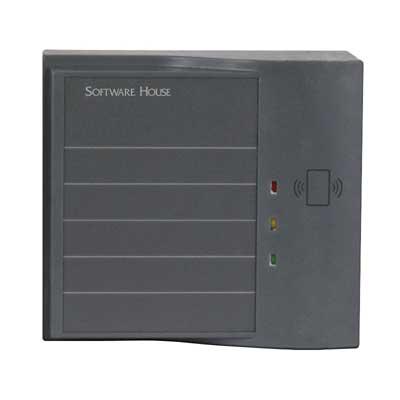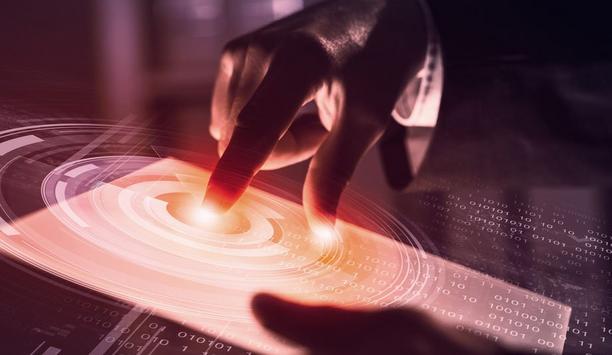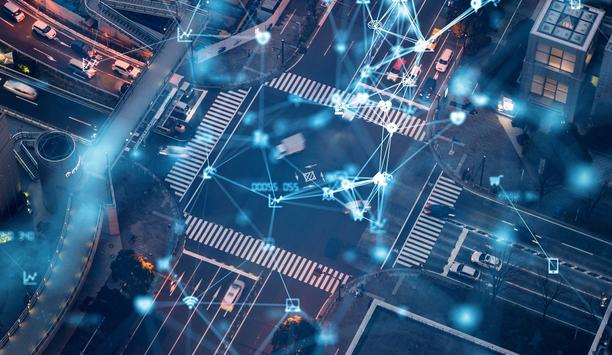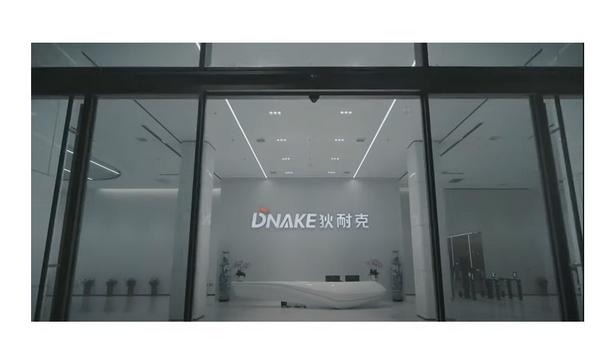Outdoor Security
Deep Sentinel, the pioneer in AI-powered proactive video surveillance with real-time human intervention, now announced the launch of its Mobile Monitoring Trailer — a fully mobile, solar-powered security platform that delivers instant access to Deep Sentinel’s remote live guard monitoring anywhere, including places where power and permanent infrastructure are unavailable. Purpose-built for high-value outdoor environments, such as auto and parking lots, construction sites, industrial...
Euralarm will organize a Perimeter Round Table on November 25, during the Section Meetings in Athens. Interested parties can join the round table either online or in person. The security landscape in Europe is evolving rapidly. As technology advances and threats become more complex, perimeter protection has emerged as a critical layer in safeguarding people, property, and infrastructure. Industry experts and decision-makers Recognizing the growing importance of this field, Euralarm is organiz...
Viking Electronics is making it easier than ever to secure entry points and streamline communication with the launch of the E-32T Series IP Intercoms. Built for the security-conscious environments, these rugged intercoms deliver reliable voice communication, simple setup, and advanced SIP security features - all in one powerful package. The E-32T Series supports SIP over TLS and full SIPS, ensuring secure communication and compatibility with pioneering VoIP providers. A built-in Web User Interf...
DNAKE announced its four cutting-edge and brand-new intercoms that are designed to fulfill all-scenario and smart solutions. The innovative line-up includes door station S215, and indoor monitors E416, E216, and A416, highlighting its leadership in the inspiring technology. Compatibility and interoperability Following the company’s continued investment in R&D and its in-depth understanding of smart life, DNAKE is committed to delivering the best possible products and solutions...
Codelocks has launched its Adjustable Gate Latch, giving locksmiths and facilities managers an easier way to control access through perimeter gates where the gate and post spacing exceeds the range of a traditional mortice latch. Jo Milne-Rowe, Managing Director at Codelocks, said: “This new product is quite literally filling a gap that other products can’t. There are many scenarios where standard mortice latches won’t work, and often the space between the post and gate w...
Interface Systems, a pioneering managed service provider delivering business security, actionable insights, and purpose-built networks for multi-location businesses, announced it will unveil its Virtual Perimeter Guard solution at NRF PROTECT 2025. Designed to help retailers, restaurants, and other commercial businesses reduce crime and improve outdoor security, Virtual Perimeter Guard combines AI-enabled cameras with live intervention from Interface’s U.S.-based security e...
News
Allegion US, a foremost provider of security solutions, technology and services, has introduced the Outdoor Defense (OUT) option for 98/99 exit devices, the first Von Duprin product designed to protect device functionality in outdoor conditions, providing the reliability, quality and function expected from Von Duprin. Authority comments "As the demand for reliable security solutions in outdoor environments continues to grow, we're excited to introduce the Outdoor Defense option for Von Duprin exit devices,” said Marli Williams, general manager, Exits & Door Controls at Allegion. “This innovation not only enhances the durability and performance of our 98/99 Series but also offers additional protection for critical components against weather conditions.” “Our commitment is to provide our customers with peace of mind, knowing that their panic hardware is built to help withstand the elements." The Outdoor Defense option The Outdoor Defense option is designed to safeguard against moisture, temperature variations and corrosion in exterior applications The Outdoor Defense option is designed to safeguard against moisture, temperature variations and corrosion in exterior applications. Available for the popular 98/99 Series rim and surface vertical rod exit devices, this option is engineered to protect device functionality. The Outdoor Defense option is also available for mechanical devices as well as popular electronic components, such as switches, latch retraction, delayed/controlled egress, alarm kits and more. Outdoor Defense products are designed to perform in outdoor conditions within the parameters of the products testing conditions such as courtyards, perimeter security, rooftops and patios. Electrical options available Several popular electrical options are available with the Outdoor Defense option. Latch retraction (QEL), alarmed exits (ALK), delayed/controlled egress (CX) and monitoring (RX and LX), are all available options. "With the introduction of the Outdoor Defense option, we are setting a new standard in exterior security solutions. This offering reflects our dedication to engineering excellence and customer satisfaction, providing robust protection for both mechanical and electronic components,” said Williams. “Whether it's for courtyards, rooftops or perimeter security, Von Duprin's Outdoor Defense helps ensure safety without compromise in outdoor environments.”
Vismo has optimized its mass notification offering to strengthen customers’ employee wellbeing anywhere in the world during an emergency or emerging threat, by including it on the Vismo Monitor App. For the first time, employers can now see their employees' real-time locations on the app instead of a desktop computer, and immediately send mass notifications to staff affected by, or under potential threat from, a crisis, via the app. “Having all the functionality of our mass notification on the app saves crucial time and gives security teams greater flexibility by not having to be in a static, fixed place of work in front of a computer screen,” says Vismo Global Sales Director Colin Dale. Any mobile device The app works with any mobile device, and the Vismo platform supporting satellite phones and trackers, to give a faster response to any risk to wellbeing and to business continuity. “We achieved this by integrating the app and with our secure portal so that the app mirrors the full functionality of the portal,” says Dale. “That saves time for employers’ security operations. No longer do they have to switch platforms to run mass notifications or indeed any other function of the app. They can do everything on a smartphone.” Robust network connectivity “One unique aspect of our tier one service is our ability to use more than 600 direct roaming agreements globally in a permanent roaming solution where needed,” Dale adds. “They give employer organizations very powerful roaming connectivity, with fallbacks and optional eSIMs, to ensure the most robust network connectivity possible for all two-way mass notification actions.” Multi-channel messaging – and more Vismo’s mass notification makes use of multi-channel messaging between security teams and app users Vismo’s mass notification makes use of multi-channel messaging between security teams and app users. It is real-time communication with an entire workforce, selected groups of staff or one individual, regardless of their location. Additionally, it can be integrated with - and customized via - employer organizations’ own infrastructure including HR systems and security protocols. Intelligence feeds Vismo utilizes intelligence feeds 24/7 to see threats as they are reported by specialist intelligence gathering operations, and other sources, including emergency services, individuals and news and other organizations. Dale comments, “Mass notification is a fundamental part of safeguarding staff in any situation anywhere, whether in at-risk areas and or wherever the unexpected can suddenly happen.” “Immediately they learn of a threat, employer organizations’ security staff, or outsourced security team, can take immediate steps to help. Step number one is to use mass notification to give an urgent warning about what is happening or about to happen, and then give more details, with advice on how to be safe as events unfold.” Emergency services Dale adds, “Step two includes optional phone conversations between those under duress or at risk, and security staff, to gain further information including the proximity of the app users to what is unfolding and more detail about it.” “Step three involves liaison with emergency services and private security companies, and, ultimately, evacuation, if required.”
Artificial Intelligence Technology Solutions, Inc., through its wholly owned subsidiary Robotic Assistance Devices, Inc. (RAD), will begin a nationwide demonstration tour of its recently unveiled ROAMEO™ Gen 4 security robot starting in June. Designed to showcase ROAMEO’s autonomous patrol capabilities and rapid-response AI features, the tour includes live demonstrations at some of the country’s largest retail, healthcare, logistics, and entertainment properties. This strategic initiative follows RAD’s receipt of Frost & Sullivan’s prestigious 2024 Enabling Technology Leadership Award, recognizing the Company as a disruptor in autonomous security. How ROAMEO’s autonomous presence can modernise Stops on the ROAMEO Gen 4 demo tour include a large national retailer with over 20 locations Stops on the ROAMEO Gen 4 demo tour include a large national retailer with over 20 locations, a major California entertainment complex, a logistics distribution hub with over 100-site footprint, two different healthcare networks representing more than 600 facilities combined, a pioneering state university, and a prominent auto dealership network with operations across multiple states and over 20 locations. These organizations, representing some of the most security-conscious and cost-sensitive industries, will experience firsthand how ROAMEO’s autonomous presence can modernize perimeter and campus patrols, reduce reliance on costly human guards, and enhance real-time awareness across vast properties. RAD’s next-generation mobile security robot ROAMEO Gen 4 is RAD’s next-generation mobile security robot, engineered for autonomous patrols across expansive outdoor environments. Towering at 6 feet 9 inches and weighing over 1,600 pounds, ROAMEO delivers a commanding presence while performing complex tasks like AI-powered threat detection, real-time engagement, and obstacle avoidance. Equipped with autonomous navigation and self-recharging capabilities, the device is purpose-built to take on the repetitive, high-cost duties typically assigned to human guards. Whether monitoring a busy campus parking structure or securing the perimeter of a logistics hub, ROAMEO Gen 4 delivers uninterrupted coverage, faster response, and measurable cost savings over traditional patrol models. How ROAMEO performs in real-world conditions Several ROAMEO Gen 4 units are already on order, with initial deployments expected to begin Several ROAMEO Gen 4 units are already on order, with initial deployments expected to begin in August and September. These early sales reflect rising demand from clients seeking to modernize their security infrastructure with solutions that are reliable, autonomous, and built to scale. The demo tour is expected to accelerate this momentum, offering key decision-makers a live, immersive look at how ROAMEO performs in real-world conditions. RAD’s ability to deliver proactive security RAD’s selection as the recipient of Frost & Sullivan’s 2024 Enabling Technology Leadership Award underscores the innovation behind ROAMEO Gen 4 and the broader RAD product lineup. In its evaluation, Frost & Sullivan highlighted RAD’s ability to deliver proactive security, reduce costs, and bridge the gap between autonomous technologies and human oversight. ROAMEO, with its SARA™ platform, embodies this vision, combining mobility, AI-driven engagement, and seamless integration into existing security operations. Future of outdoor security ROAMEO, with its SARA™ platform, embodies this vision, combining mobility, AI-driven engagement “We believe ROAMEO represents the future of outdoor security, and this tour is about showing, not telling,” said Steve Reinharz, CEO/CTO of AITX and RAD. “Clients want solutions that work right now, that cut costs, and that deliver results without compromise. ROAMEO Gen 4 does exactly that. We’re thrilled to bring this technology directly to organizations that understand the value of innovation and are ready to make a change.” ROAMEO Gen 4 in action Organizations interested in seeing ROAMEO Gen 4 in action are encouraged to schedule a private demonstration during the tour. Availability is limited, and priority will be given to enterprises with large outdoor properties or multi-site security needs. AITX, through its subsidiary, Robotic Assistance Devices, Inc. (RAD), is redefining the nearly $50 billion (US) security and guarding services industry through its broad lineup of innovative, AI-driven Solutions-as-a-Service business model. Security guarding and monitoring model All RAD technologies, AI-based analytics and software platforms are developed in-house RAD solutions are specifically designed to provide cost savings to businesses of between 35%-80% when compared to the industry’s existing and costly manned security guarding and monitoring model. RAD delivers these tremendous cost savings via a suite of stationary and mobile robotic solutions that complement, and at times, directly replace the need for human personnel in environments better suited for machines. All RAD technologies, AI-based analytics and software platforms are developed in-house. Data protection and security compliance The Company’s operations and internal controls have been validated through the successful completion of its SOC 2 Type 2 audit, reinforcing the Company’s credibility with enterprise and government clients who require strict data protection and security compliance. RAD has a prospective sales pipeline of over 35 Fortune 500 companies and numerous other client opportunities. RAD expects to continue to attract new business as it converts its existing sales opportunities into deployed clients generating a recurring revenue stream. Each Fortune 500 client has the potential of making numerous reorders over time.
NordVPN, an innovative cybersecurity company, now includes essential identity theft recovery coverage in its cyber insurance benefits for customers in the United Kingdom. This ID theft recovery coverage complements the scam loss recovery protection that the company already offers through partnerships with select insurance providers. Cyber insurance benefits are included in the NordVPN Ultimate bundle subscription plan at no additional cost. This plan also features the NordVPN virtual private network service, the NordPass password manager, and other advanced security features. Identity theft protection NordVPN’s cyber insurance benefits for customers in the United Kingdom include ID theft recovery “Identity theft is a crime that can lead to multiple other offenses and severe financial losses, as criminals use stolen identities to commit further fraud. That’s why we are enhancing our cyber insurance benefits to bridge the cyber protection gap in the areas that matter most today and to support our customers affected by cybercriminals,” says Tomas Sinicki, managing director at NordProtect. Currently, NordVPN’s cyber insurance benefits for customers in the United Kingdom include ID theft recovery and scam loss recovery. ID theft recovery provides reimbursement for necessary legal expenses incurred while restoring a user's identity after falling victim to identity theft. It includes restoration of the user’s credit rating, e-money accounts, bank accounts, mortgages, and loans. Identity theft recovery Additionally, it ensures the removal of any civil judgments wrongfully entered against the user and helps prevent further fraudulent use of their identity. Furthermore, ID theft recovery reimburses lost income if the user has to take time off work to resolve identity theft issues. Scam loss recovery provides reimbursement when a user has transferred funds from a personal account in response to a cyber scam. This includes instances where victims are deceived into opening or responding to fraudulent emails, text messages, or phone calls that appear to be from legitimate entities or trusted contacts. NordVPN’s cyber insurance coverage Customers can claim reimbursements of up to £5,000 within a 12-month period if they are unable to recover their lost funds Customers can claim reimbursements of up to £5,000 within a 12-month period if they are unable to recover their lost funds through their bank, credit card provider, or other financial institution. Cyber insurance benefits are available to affected customers worldwide, 24/7. NordVPN’s cyber insurance coverage is available to customers residing in the United Kingdom, the Netherlands, France, Sweden, Germany, and Italy. In the United States, NordVPN’s identity theft protection solution, NordProtect, provides protection against identity theft, cyber extortion, and online fraud. NordProtect can be purchased as part of the NordVPN Prime plan or as a standalone service.
Award-winning security manufacturer, Gallagher Security, has been awarded the contract to secure the University of Witwatersrand (WITS) in Johannesburg, one of South Africa’s largest universities. Spread across 400 acres in Braamfontein and Parktown, WITS boasts five faculties comprising 35 schools, more than 30 service departments, 11 libraries, 18 halls of residence with 6600 beds, and offers 3416 courses. Gallagher access control system Gallagher will replace the existing access control system with their award-winning site management platform In 2024, WITS was ranked 291 out of 20,966 universities, putting it in the top 1.4% in the world, and in 2023, it had an enrollment count of 42,189 students and a staff of 1273. Together with Channel Partner, FS Systems, Gallagher will replace the existing access control system with their award-winning site management platform, Command Center. The 18-month rollout, which began this month, is expected to be completed in 2027. The installation will be completed in two phases to streamline the implementation and mitigate any risks. Migrated onto Gallagher’s system Gallagher Security, Sales Manager – South Africa, Tarryn Fortune says, “173 buildings have been identified across seven campuses that need to be migrated onto Gallagher’s system." "Phase one will be the major component of the migration and will encompass the replacement of all the existing access control hardware with Gallagher hardware.” New Gallagher controllers A driving force behind the system upgrade was the university’s decision to engage local support Additionally, the existing card readers and wave readers will be reused and hardwired onto new Gallagher controllers. All other door hardware, such as maglocks, break-glass units, pushbuttons, and cabling, will be kept, and a new interface will be developed. A driving force behind the system upgrade was the university’s decision to engage local support. Their previous software system was US-based, and incurred additional license costs each time a new integration was implemented. Fully integrated security solution Tarryn says, “We are thrilled to be partnering with WITS to deliver a fully integrated security solution that not only enhances campus safety but also streamlines operations. By consolidating multiple security systems into one intelligent Gallagher platform, WITS will gain greater control, efficiency, and future scalability." "Our focus is always on providing innovative, people-centric security solutions that adapt to the evolving needs of our customers, and this project is a testament to that commitment.” At present, the project will include 2500 doors and 80,000 cardholders.
With a new event format, INTERSCHUTZ 2026 in Hanover is placing the growing global challenge of forest and vegetation fires at the center of the trade fair. As part of WildfireCamp@INTERSCHUTZ, experts from Germany and abroad will present innovative methods for combating and preventing vegetation fires throughout all six days of the trade fair. They will discuss strategies, approaches, and measures to detect fires at an early stage or, ideally, prevent them from occurring in the first place. Collaborative response zone At INTERSCHUTZ, various outdoor areas northeast of Hall 26 will be designated for partner presentations, open to both commercial and non-profit exhibitors as well as shared spaces. “With WildfireCamp@INTERSCHUTZ, we are creating excellent conditions for bringing together developers, suppliers, and emergency responders,” says Bernd Heinold, Head of INTERSCHUTZ at Deutsche Messe. “Exhibitors can gain first-hand insights into the challenges faced by emergency services, while responders can experience the latest technological advancements the industry has to offer.” WildfireCamp spotlight According to Heinold, the WildfireCamp in the outdoor area is designed to become “a small INTERSCHUTZ within INTERSCHUTZ”, enhancing the event’s program with an engaging and interactive component. “Climate change and its negative impacts are one of the key topics of our world's leading trade fair, and vegetation fires are a crucial part of this discussion,” adds Heinold. “We are therefore grateful to have attracted such a strong and knowledgeable partner network for WildfireCamp@INTERSCHUTZ.” Smart wildfire response This solution enables fire detection while ensuring automated alerting of emergency services. As one of the three partners, Bosch Building Technologies is presenting its Wildfire Detection service. This comprehensive solution enables early fire detection in forests, recreational areas, natural spaces near infrastructure, and outdoor areas close to buildings, while also ensuring the automated alerting of emergency services. “As a partner with many years of experience in networked fire protection solutions, we are fully leveraging the advantages of digitalization, connectivity, and artificial intelligence for our latest Wildfire Detection service,” says Thomas Reinicke, Head of the Solutions Business Life Safety division at Bosch Building Technologies. “We are proud to apply our fire protection expertise not only to safeguard people and property but also to contribute to the preservation of nature.” Wildfire collaboration Another partner is the European Forest Institute (EFI), which operates in 26 member countries with 116 participating organizations from 36 countries engaged in various scientific fields. “We want to use INTERSCHUTZ to put an even stronger focus on the issue of forest fires,” says Alexander Held from EFI. “It's about knowledge transfer and networking, equipment, training, strategy, and tactics. We can also greatly benefit from the experience of our international guests.” According to Held, addressing the issue is not solely the responsibility of fire services – it begins with policy-making and extends to forest owners. “We need a coalition of the willing,” he emphasizes. Integrated fire management The third partner of the WildfireCamp is @fire. As an aid organization with a broad portfolio, they are firmly rooted in vegetation firefighting. The volunteers from @fire are not only involved in training firefighters to combat vegetation fires but are also available in emergencies. Both in Germany and worldwide, they provide specialized personnel, including firefighting teams, fire analysts, and experts for coordinating aerial firefighting operations. “We look forward to working with various partners at WildfireCamp@INTERSCHUTZ to showcase innovative approaches and available solutions for integrated fire management,” says Dr. Martin Schmid from @fire. “For me, integrated fire management means considering prevention, deployment, and reforestation as interconnected elements. It also involves examining all aspects of these solutions, such as the proper tactical integration of firefighting operations, necessary logistics like water supply, the availability of specialized personnel, and suitable communication technology.”


Expert commentary
Changing customer needs can make specifying an alarm system that will continue to deliver in the long term a challenge. However, the latest modular alarm solutions provide the opportunity to build a more individualized system from the outset, as well as offering the ability to up-scale in the future without causing disruption. Martin Wilson, North EMEA Regional Director at Resideo, looks at how alarm specialists can use this style of solution to both benefit customers and build their own business opportunities. Holistic sense of home security An alarm system no longer needs to function on one level, alerting only to a break-in taking place In a survey of 1,000 homeowners undertaken by Resideo, the results revealed that, although deterring burglary was still a top priority, consumers were moving to a more holistic sense of home security, wanting to bring convenience, and property and life safety, into the mix. Indeed, an alarm system no longer needs to function on one level, alerting only to a break-in taking place. The latest modular alarm systems offer the flexibility to create a scalable security and life safety platform for homes and small businesses, as well as giving installers the ability to suggest future update options that can be added as and when budget or requirement allows. Valuable up-scales Finding an alarm that can be scaled over time has the obvious business benefit of ensuring it is easy to revisit and add to as customers naturally expand their existing security. With many modular designs connected via WiFi, this not only means installers can opt for the right mix of sensor options from the get-go but also that any additions can be connected to the panel and system with ease. Many control hubs have winning features in their own right. The ProSeries security panel by Resideo, for instance, has an intuitive touchscreen, easy-to-read, full-color display to reduce false alarms, plus a built-in camera, speaker and microphone, intuitive icons, and even five-day weather alerts. The ProSeries security panel by Resideo has an intuitive touchscreen Natural up-scale opportunities For instance, for those in a property prone to flooding, a flood sensor may be a worthwhile addition For the installer, it has a plug-in power connection, trouble-shooting videos, and end-user-replaceable batteries to reduce unnecessary callouts. However, to build a scalable system, this needs to be coupled with the right, flexible solutions to tackle customer concerns. Taking the time to find out what is important to the end user is vital here and can lead to natural up-scale opportunities. For instance, for those in a property prone to flooding, a flood sensor may be a worthwhile addition. Similarly, a panic button and even medical transmitters may be of benefit to others. All this, as well as other options, such as glass break detectors, door and window sensors, and indoor and outdoor MotionViewers™, are available within the ProSeries range, and can be updated or added to an installation as needed or as a property grows with minimum disruption. Adding life safety The ability to propose an alarm system that can bring together alerts for different threats – for both the home and life – under one platform, also has real appeal. Indeed, in a survey of 1,000 homeowners undertaken on behalf of Resideo, a system’s ability to alert to the dangers presented by fire and CO was mentioned as an important part of the decision-making process by 41% of participants. For many, this increased awareness may stem from the many regulation updates regarding smoke and carbon monoxide (CO) alarms that took place in 2022. In Scotland, for instance, carbon monoxide detectors were required to be fitted in any room with a carbon-fueled appliance in all homes, rented or owned. Social housing properties In England, smoke and carbon monoxide alarms were required in all social housing properties In England, from the 1st of October 2002, smoke and carbon monoxide alarms were required in all social housing properties, with carbon monoxide alarms now mandatory in the private rented sector. Wales followed suit in December for rented accommodation. The new guidance for England and Wales requires at least one smoke alarm to be installed on each storey of a property, to help alert to domestic fires more quickly, ensuring a quicker evacuation and reduced risk of fatality. For professionals, systems such as ProSeries, can be connected to a series of smoke and carbon monoxide detectors, in a ‘one-go-all-go’ setup that means the alarm will go off if one of these threats are identified. Smart and connected benefits The total Connect 2.0 app gives ProSeries end-users the ability to view and control the security platform remotely. The Resideo Pro app currently gives installers the ability to view the system and connect to the central monitoring system. The platform also supports home automation as it works with Zwave devices. The platform also supports home automation as it works with Z-wave devices. The platform also supports home automation as it works with Z-wave devices There are also extra benefits for alarm professionals too. The AlarmNet 360™platform on which ProSeries is configured gives greater insight to improve business operations, increase efficiency and deliver insights on accounts to identify additional upsell opportunities and ongoing services. Providing the ability to remotely diagnose brings valuable time-saving options and avoids unnecessary callouts. It also means the ProSeries panel and peripherals programming can be accessed anytime, anywhere, using the cloud, allowing ease of programming, troubleshooting and account management on the go. Needs and future possibilities Changing a complete alarm system to apply new functions is never going to feature highly with the end user, nor does it work where longevity and sustainability is concerned. Having the ability to build a modular system and add to this as needed, whether this is at a property or a small business, provides benefits for both customers and professionals when it comes to meeting immediate needs and future possibilities. Add connectivity and remote access to this and you have a platform that can help streamline business operations, putting professionals more in touch with customers, and helping to spot future opportunities.
Amidst the challenges of a prevailing economic downturn, the retail sector finds itself grappling with an unparalleled rise in incidents of shoplifting, theft, and burglaries. The disconcerting scenes witnessed on London’s Oxford Street in August 2023, where crowds gathered, looting as many stores as possible, sent shockwaves across the nation’s retailers. This alarming surge in retail crime has put retailers on high alert, as they contend with a rising tide of security concerns. Shoplifting concerns Recent data from the Union of Shop Distributive and Allied Workers (USDAW), has raised alarming concerns: shoplifting rates have surged by an unprecedented 24%. In the first half of 2023 alone, there were approximately 8 million reported shoplifting incidents. With the ongoing burden of the cost of living crisis and the approaching festive season, it is expected that these figures will keep surging. Implementing robust security measures Theft and prevention strategies cost retailers approximately £2 billion in 2021/2022 While more help from the Government to support retail workers and the businesses shoplifters target is certainly needed, the implementation of robust security measures will significantly contribute to deterring these crimes from occurring in the first place. British retailers spend millions on tools to deter and catch shoplifters inside stores, from CCTV and security guards to electronic tagging and alarms. The Grocer reported that theft and prevention strategies cost retailers approximately £2 billion in 2021/2022. Despite these initial costs, other threats are at play beyond the shop floor. Break-ins by criminal gangs For many large town center stores and supermarkets, and units in retail parks, the rear doors and delivery areas are commonly targeted by criminal gangs. It’s not uncommon for thefts to occur from pallets or cages that have been unloaded from lorries and sit waiting to be moved into the building. After-hours break-ins are a risk for all store owners too, particularly over the festive season when a lot of high-value stock has been delivered to shops and supermarkets. Addressing anti-social behaviour The additional fencing was deemed an essential measure to safeguard the community Anti-social behavior also poses a challenge for retailers. In 2022, an Aldi based in Derby invested in security fencing to protect staff and deter loitering groups. The additional fencing was deemed an essential measure to safeguard the community, as dangerous items were frequently found outside the store, including weapons and hypodermic needles. So how do physical security solutions such as fencing and gates help better protect retail establishments such as supermarkets and edge-of-town retail park shops? Fencing and gates: a critical component of retail security 1. Risk assessment and target hardening A thorough risk assessment will identify potential weak spots that require protection. ‘Target hardening’ involves implementing physical security measures that become more robust as they approach the target. This helps deter intruders while ensuring ease of access for customers and staff. 2. Effective perimeter security Opt for difficult-to-climb security fencing that provides a robust obstacle against thieves, vandals, and intruders Selecting fencing solutions according to the potential threats, site characteristics, and topography is crucial. It is important to specify fencing that strikes a balance and maintains a welcoming appearance while safeguarding external areas of the store or warehouse from potential harm and unauthorized access. Solid fencing which provides concealment can help to conceal expensive goods and remove them as a target for opportunistic theft. Opt for difficult-to-climb security fencing that provides a robust obstacle against thieves, vandals, and intruders. I recommend selecting a sufficiently tall and robust fence such as an acoustic barrier. Its noise-reducing properties are often beneficial for these types of sites too. 3. Controlling vehicular speeds and access To enhance security, consider controlling vehicular speeds and access. One effective approach is the installation of bollards at the ends of traditional high streets. This practice is already commonplace as a means of safeguarding against hostile vehicle attacks, but it can also play a pivotal role in preventing quick getaways of vehicles involved in potential heists. Additionally, employing road blockers and sliding gates at the rear entrances of delivery areas would serve to fortify security further. These measures can help in delaying vehicles, allowing for necessary checks to be conducted. 4. Balancing security with aesthetics The presence of high-security fencing can also make a site more of a target for vandals and burglars Another challenge is avoiding creating an imposing presence, especially important for areas situated near residential communities. The presence of high-security fencing can also make a site more of a target for vandals and burglars. To minimize this risk consider specifying timber fencing and traffic barriers to secure car parks, providing both security and a welcoming atmosphere for shoppers. Taking an integrated approach Combine secure perimeter fencing with effective lighting in places with shaded areas and at doors, gates, and shop windows, alongside Perimeter Intrusion Detection Systems (PIDS), and strategically placed CCTV. These measures will hinder unauthorized entry and escape, increasing the likelihood of detection and apprehension. Prioritising employee wellbeing Installing robust security fencing, complemented by CCTV, good lighting, and guarding, creates a safe environment Installing robust security fencing, complemented by CCTV, good lighting, and guarding, creates a safe environment for employees. This not only safeguards their well-being but also provides peace of mind that they are protected effectively in the case of a burglary or crime. When selecting security products for retail sites, it is advisable to opt for items that have undergone rigorous testing and carry relevant certifications for their security level. Each component should meet industry-specific standards for its intended purpose and originate from manufacturers accredited under ISO 9001:2015. This ensures a high standard of quality and reliability in safeguarding the premises. High-quality security fencing As the cost-of-living crisis continues, crime rates increase, and the festive season approaches, the time to act and implement on-site security is now. By investing in comprehensive security measures, retailers can protect their assets, employees, and customers, ensuring a safer and more secure shopping environment for all. High-quality security fencing is also a sound investment, that requires little or no maintenance once installed. The best fencing solutions are extremely weather-resistant, and won’t suffer from rust or corrosion. With all sectors preparing to ride the rapids of recession in the coming year, improving on-site security while selecting cost-effective measures, is one surefire way to protect your people, your property, and your profits from harm.
The average business owner or investor has some kind of security precaution in place, especially in the after-hours when there are fewer deterrents to inhibit criminal activity. Security guards, video surveillance systems, motion sensor lights, or even just fake cameras placed around the property are some of the common options people choose. Future of overnight security Smart business owners are starting to realize, however, that some of these traditional security measures are becoming antiquated and no longer cutting. The now and future of overnight security is in remote guarding. Pioneered by companies like Los Angeles-based Elite Interactive Solutions, which was founded back in 2007, remote guarding is revolutionizing the overnight security business. Minimizing criminal activity Remote guarding is fast becoming the most popular choice among commercial end-user property owners Remote guarding utilizes a combination of cutting-edge technology, “digital guards,” highly trained security agents, and local law enforcement if and when necessary to minimize the potential of criminal activity. For those adequately enlightened to its overwhelmingly impressive crime prevention capabilities, remote guarding is fast becoming the most popular choice among commercial end-user property owners to secure and protect their investments. What Is Remote Guarding? Remote guarding is a revolutionary concept and increasing trend in security systems that utilize a combination of methods to effectively analyze potential threats to property. Cameras and/or other monitoring devices running highly advanced algorithmic software are installed in strategic areas or vulnerable places onsite and remotely located security agents are immediately notified of any activity within a designated perimeter of the property. A blend of AI, cybersecurity, and video analytics When properly deployed by an expert provider, the technology stack includes a proprietary blend of video analytics, artificial intelligence, cybersecurity, and more. Done right, “noise” is effectively filtered out, allowing agents to act on legitimate alerts and achieve zero false alarms communicated to first responders. Today, there are a lot of terms and descriptions tossed around about remote guarding, remote video, virtual guarding, etc., but those attributes must be present to represent the true definition of the offering and its many virtues. Realtime situational awareness Many systems have a two-way speaker that allows the security agent to give a verbal warning When specially trained security agents are alerted to trespassers, possible intruders, or other suspicious activity, they analyze the situation in real time and determine the necessary level of action. Many systems have a two-way speaker that allows the security agent to give a verbal warning, known as a voice-down, to the individual(s) that they are being watched. Most perpetrators, often believing the response is emanating directly from security personnel on the property itself rather than from a remote command center, flee immediately. However, if the threat persists, the security agent enlists local law enforcement to get on the scene. Customized remote guarding When properly deployed, remote guarding systems are also customized to specific properties. A team of consultants visits the client’s property to evaluate its vulnerabilities and where to best place cameras and/or other monitoring devices for system efficacy. Traditional Security Shortfalls According to Keith Bushey, a retired commander for the Los Angeles Police Department, there is much frustration between law enforcement officers and potential victims of crime due to the historically unreliable performance of traditional burglar alarm systems and central monitoring stations. He states about 90% of security-related calls are false alarms, a problem that has been well-documented through the years. Onsite challenges When a legitimate emergency does occur, the perpetrators have often already done their damage When a legitimate emergency does occur, the perpetrators have often already done their damage and/or escaped by the time law enforcement arrives. Onsite security guards are not the remedy either as they bring their own set of issues and challenges. Unexpected costs Traditional security systems can also have unexpected costs. The cost is not only in the security guards’ paycheck or the cost of the equipment itself. The cost comes when an actual incident occurs. In worst-case scenarios, the security guard(s) are injured, the business suffers inventory loss, and/or damage is sustained to the property. The medical and other costs for the security guard(s), the loss of inventory, property damage, deployment of law enforcement resources, and possible fallout of legal expenses all add up. Even in the best-case scenario, false alarm expenses incur if law enforcement is dispatched. These, among many others, are some of the primary issues that remote guarding resoundingly answers as a superior alternative. A Bounty of Benefits Remote guarding systems have been proven to cut costs and be more effective than traditional security systems. Even though the monthly monitoring costs of remote guarding are significantly higher than traditional intrusion detection system monitoring, the much higher effectiveness in crime reduction, elimination of false alarms, and augmenting or replacement of manned guards result in a substantially higher return on investment (ROI) to the end user. Easy tracking of threats The security cameras already have their image captured on record, making them easier to track down For example, case studies have demonstrated reduced security costs for clients by 60%, on average. These reductions have come from the costs of security staff, inventory, or property loss, plus saving money on insurance premiums and deductibles. The nature of remote guarding reduces the risk and costs of false alarms, with professional security agents able to determine an actual threat before law enforcement is called. In a rare instance when a perpetrator escapes before law enforcement arrives or can detain the individual(s), the security cameras already have their image captured on record, making them easier to track down and identify. Reduction of false alarms The significant reduction in false alarms is greatly appreciated by law enforcement, as it allows them to focus on real emergencies or crises. Better relationships are also developed between clients and law enforcement, as remote guarding systems are highly reliable in providing accurate and real-time information to officers as they approach the scene. In short, it assists law enforcement in doing their job more effectively, as well as more safely thanks to having eyewitness information before engaging in an active crime scene. Partnership When you combine the decreased cost with the increased efficiency and success rate, it is easy to see why many commercial end-user property owners across the country are making the shift to remote guarding. It’s also an outstanding opportunity for professional security dealers and integrators to partner with a remote guarding services provider to bring a superior solution to their end customers and pick up a recurring monthly revenue stream in the process.
Security beat
Companies at GSX 2023 emphasized new ways that technologies such as artificial intelligence (AI) and the cloud can address long-standing issues in the security market. Among the exhibitors at the event in Dallas were companies seeking creative ways to apply technology, lower costs, and make the world a safer place. Reflecting on the exhibition, here are some additional takeaways. Expanding AI at the edge i-PRO is a company reflecting the continued expansion of edge AI capability in the security market. Today, more than half of the company’s lineup supports AI at the edge so the customer has a wide choice of form factors when seeking to leverage the feature set. AI processing relay, extended warranty i-PRO is increasing their warranty period from 5 to 7 years, which could be a lifetime warranty in some cases I-PRO also has an “AI processing relay” device that accepts non-AI video streams and applies edge analytics. AI has progressed from a high-end technology to a feature available in a variety of cameras at different price points. i-PRO is also increasing its warranty period from 5 to 7 years, which could be a lifetime warranty in some cases depending on a customer’s refresh schedule and lifecycle management. Active Guard, MonitorCast The company’s video management system (Video Insight) is continuing to build new features including “Active Guard,” an integrated metadata sorter. Their access control platform, MonitorCast, is a Mercury-based solution that is tightly integrated with Video Insight. Their embedded recorders now have PoE built in. “We can move at a faster pace to fill out our product line since leaving Panasonic,” says Adam Lowenstein, Director of Product Management. “We can focus our business on adapting to the market.” Emphasis on retail and other verticals Shoplifting is a timely issue, and retail is a vertical market that got a lot of attention at GSX 2023. “We see a lot of retailers who are primarily interested in protecting employee safety, but also assets,” says Brandon Davito, Verkada’s SVP of Product and Operations. “Shrinkage is a CEO-level priority.” “Retailers are getting more engaged with security posture, instead of letting perpetrators walk,” Davito adds. Intrusion detection Verkada has an intrusion product that will notify a central station if there is an alarm On the alarm side, Verkada has an intrusion product that will notify a central station if there is an alarm, and operators can review videos to confirm the alarm. Other capabilities seeking to discourage trespassers include sirens, strobes, and “talkdown” capabilities. International expansion Verkada continues to expand internationally with 16 offices in all, including Sydney, Tokyo, and London. The core value proposition is to enable customers to manage their onsite infrastructure more simply, including new elements such as PTZ cameras, intercoms, and visitor management. Verkada emphasizes ease of use, including a mobile application to allow access to be managed across the user base. Forging partnerships “We are committed to the channel and industry, and we continue to build relationships and expand our reach,” says Davito. Among the industry relationships is a new partnership with Convergint, which was hinted at during the show and announced later the same day. They are also expanding their partnerships with Schlage, Allegion, and ASSA ABLOY. Working with other verticals They offer new features for K -12 schools, and a new alarm platform is easier to deploy and manage Verkada has also found success across multiple other verticals, notably healthcare, where they integrate with an electronic medical records system. They offer new features for K-12 schools, and a new alarm platform is easier to deploy and manage. They are integrating wireless locks to secure interior doors in schools, looking to secure the perimeter, and installing guest management systems. Transitioning the Mid-Market to the Cloud Salient is squarely focused on the “mid-market,” a large swath of systems somewhere between small businesses and enterprise-level systems. Pure cloud systems are not as attractive to this market, which has a built-out infrastructure of on-premise systems. Adding a camera to an existing system is easier and less expensive than tying it to the cloud. Benefits of cloud It’s a market that may not be ready for pure cloud, but there are benefits to be realized from adding a cloud element to existing systems. “We are continuing to augment our premise-based solutions with added cloud capabilities and flexibility,” says Sanjay Challa, Salient’s Chief Product Officer. The feedback Salient hears from their customers is “I want to own my data.” The hybrid cloud approach offers the right mix of control, flexibility, and unit economics. Cloud add-on capabilities We want to provide the flexibility for customers to go full-cloud as it becomes more economically attractive" Cloud add-on capabilities include bringing more intelligence about system operation to the user via the cloud. Over time, Salient expects to sell more cloud-centric offerings based on feedback from integrators and customers. “We want to provide the flexibility for customers to go full-cloud as it becomes more economically attractive over time,” says Challa. Vaidio AI technology Salient seeks to be a transition pioneer to help customers realize the path to the cloud. Their approach is “crawl, walk, run,” and helping customers make the transition at each stage. Salient has added AI to its product offering, incorporating Vaidio AI technology from IronYun into a powerful suite and broad array of on-premise analytics, which are gaining traction. The seamless approach makes it easy for customers to embrace AI analytics, although Salient remains broadly committed to open systems. Addressing ‘Soft’ Features for Integrators AMAG is in the process of enhancing its product line with the next generation of access control panels. However, “product” is just part of the new developments at AMAG. In addition to “hard” features (such as products), the company is looking to improve its “soft” features, too; that is, how they work with the integrator channel. Integrator channel Rebuilding a process to make your organization more efficient, is relatively easy; it just takes a lot of persistence" “We have the depth of our legacy customer base we can learn from, we just need to close the feedback loop quicker,” says Kyle Gordon, AMAG’s Executive Vice President of Global Sales, Marketing, and commercial Excellence, who acknowledges the value of reinstating face-to-face meetings after COVID. “We are laser-focused on nurturing our integrator channel,” he says. “Developing new features takes time, but rebuilding a process to make your organization more efficient, that’s relatively easy; it just takes a lot of persistence,” says Gordon. More cohesive internal communication is another useful tool, he says. Disrupting the cloud based on price Wasabi is working to make cloud applications less expensive by offering a “disruptive” price on cloud storage, $6.99 per terabyte per month (80% less than hyperscalers). Contending “hyperscalers” like AWS are charging too much for cloud storage, Wasabi is using its own intellectual property and server equipment co-located in data centers around the world. Wasabi sells “hot cloud storage,” which refers to the fact that they only have one tier of storage and data is always accessible. In contrast, a company such as AWS might charge an “egress fee” for access to data stored in a “colder” tier. Cloud storage “We saw that several video surveillance companies had not yet adopted cloud storage, and we saw an opportunity to make it easy to use,” said Drew Schlussel, Wasabi’s Senior Director of Product Marketing. “We just install a little bit of software that allows them to store data in the cloud and bring it back from the cloud.” Performance, protection (cybersecurity), and price Wasabi works with integrators, resellers, and distributors and also integrates with VMS companies Wasabi works with integrators, resellers, and distributors and also integrates with VMS companies such as Genetec and Milestone. Emphasizing performance, protection (cybersecurity), and price, their data centers are certified to SOC 2 and ISO 27001 standards. Faster throughput for weapons detection Xtract One is a young company focusing on weapons detection in a time of accelerated concern about gun issues post-COVID. Founded in Canada and based on technology developed at McMaster University, Xtract One has found a niche in providing weapons detection at stadiums and arenas. These customers already have budgets, and it is easy to shift the money to a newer, faster technology. Madison Square Garden in New York City is among its customers. Cost savings solution Xtract One can increase throughput to 30 to 50 people per entrance per minute (compared to 5 to 6 people per minute when using metal detectors). The solution doesn’t require anyone to empty their pockets and the system alarms on items beyond guns and knives. Using Xtract One allows customers to reduce the number of screening lanes and security staff, providing additional cost savings, all while getting fans through the screening process in half the time. Purpose-built sensors The system uses purpose-built sensors looking for specific characteristics, such as reflective and density properties In addition to stadiums and arenas, Xtract One, formerly Patriot One, is also getting “inbound” interest from schools, hospitals, manufacturers, and other verticals that makeup 50% of their business. “We’re on a rocket ride, mainly because the weapons issues are not going away,” says Peter Evans, CEO and Director at Xtract One. The system uses purpose-built sensors looking for specific characteristics, such as reflective and density properties, all correlated by an AI engine. Providing early warning of violence ZeroEyes is another company focused on weapons detection. Their AI gun detection system works with video images to identify if someone is “brandishing” (carrying) a weapon. In other words, the system does not detect concealed weapons. Identifying someone carrying a weapon provides early warning of a possible violent act. Increased response with AI-enables images Images are identified by AI and sent to a monitoring center where a human confirms the image before contacting first responders. Knowing the location of a shooter enables staff to lock entry points, move people to safety, and direct first responders. The company was founded to leverage existing camera views to stop mass shootings and gun violence by reducing response times.
A pioneer in the access control sector since 1971, AMAG Technology is looking to the future and the next generation of products that will expand its services to customers. “In our vision, we have advanced approaches that will not only provide our partners with advanced technologies but also ones that are easier to install with tools to expand their services,” says David Sullivan, who was appointed President of the venerable access control company in September 2022. New challenges at AMAG Sullivan brings a new outlook to the AMAG business, a part of Allied Universal, and a new vision to lead the company into the future. We caught up with David Sullivan to discuss his new challenges at AMAG and the journey ahead as the company looks to the future. Q: How does your background inform your approach to leading AMAG? I believe that it helps me to define a vision for AMAG that will be unique and on the leading edge of our industry David Sullivan: With the exception of only a few short years, my career has been in access control. I have experience with several systems and have had the privilege to manage several successful access control companies. As a result, I bring a great deal of experience into my role at AMAG. I believe that it helps me to define a vision for AMAG that will be unique and on the leading edge of our industry. Q: How would you describe AMAG’s journey over the last several years and how do you see the future? Sullivan: Prior presidents of AMAG always shared their leadership vision and direction with senior leaders located in the United Kingdom. This had an impact on the full direction of the business, sometimes limiting its ultimate success. Before I became a part of AMAG, these senior leaders that were located in the UK retired, placing for the first time the full management responsibilities of the president. This has allowed me to integrate the business into a single team, with single objectives, and a single vision. We expect to begin to reveal this new vision in the coming weeks. We are excited about the future of AMAG and believe we will surprise the industry with our new products and approach in the coming months and years. Q: How important is it that a manufacturer provides both hardware and software solutions? How does AMAG’s approach (in general) differentiate it in the market? We can design the complete solution, providing functionality that others may find more difficult to accomplish Sullivan: Regardless of the manufacturer, we all provide hardware and software. An access control solution is not complete without both. Some of us choose to make our panels, and others do not. Those who are dependent on third-party suppliers are restricted to the developments and direction of that company, and while it might be perceived to be an open technology, it still is proprietary to the hardware manufacturer. AMAG has controlled its manufacturing of panels from day one. The result means that we can design the complete solution, providing functionality that others may find more difficult to accomplish. Q: How does the breadth of AMAG’s product suite provide advantages to customers and/or integrators? Sullivan: AMAG’s product portfolio is unique and provides the end user with an end-to-end identity management solution from one company. Our Control Room PSIM, Symmetry CONNECT Identity Management Solution, Symmetry Access Control, and Symmetry GUEST solutions all integrate to provide the user with a broad set of features and capabilities from a single provider. There is no finger-pointing when we come to support your system. We hold full responsibility for making it work and can quickly provide a resolution to any application difficulties the user may be experiencing. Q: How does AMAG address the divide between on-prem and cloud systems? How do you help customers make the transition and/or plan for the future? We are in the early stages of developing our next generation of access control in which we intend to provide on-prem Sullivan: In our current product portfolio, we have three products that are cloud-based. Our mobile credential platform (Symmetry Mobile), our visitor management solution (Symmetry GUEST), and our physical identity and access management solution (Symmetry CONNECT) are all offerings that operate in the cloud. We are in the early stages of developing our next generation of access control in which we intend to provide on-prem, web client, and cloud-based offerings. One of the primary objectives is to ensure that the large installed base of systems that are out there today will be able to migrate not only to our next generation but as well to the cloud if the client so desires. Q: What is AMAG’s approach to mobile credentialing? Sullivan: As an access control provider, adding Symmetry Mobile credentialing to our portfolio just made sense. We want our customers to have a forward-thinking solution with the opportunity to save money not only on the physical badges but the cost of printing and distributing badges. Mobile credentials can be easily issued and revoked remotely, reducing administrative overhead, and eliminating the need for physical inventory management. Organizations can centrally configure what devices are used and the read range for each type of device and operating system, thus providing flexibility. Symmetry Mobile offers a customized questionnaire that controls access and reduces liabilities. Q: What has surprised you the most in your first year or so leading AMAG? Not many companies are blessed with such a broad portfolio that is supported by a resource-rich company Sullivan: I wouldn’t say I was surprised by this as much as happy to see, but I would say that the quality of our people was a pleasant surprise. As well, the AMAG product offering is broad and has some unique elements. When coupled with the depth of the resources that we have in AMAG, I know that we are second to none. Not many companies are blessed with such a broad portfolio that is supported by a resource-rich company that has so many talented people. Q: Please describe your dealer channel, and how you are seeking to expand it. Sullivan: The AMAG products are sophisticated and typically are installed for higher-end applications. With this sophistication comes a need to be well able to install such a solution. We have a strong group of certified and loyal partners who help us to deliver these enterprise solutions. We desire to provide our existing partners with updated and competitive systems to offer to their end users. Q: What is the security industry’s (and/or AMAG’s) biggest challenge in the next five years? We need to find ways to provide both our channel partners and the customers with solutions that are easily integrated Sullivan: I believe that the advancements that we are seeing in technology provide our industry with the opportunity to truly change how security is provided to our collective customers. As we advance these solutions, we will need to do so responsibly and in a way that helps the channel’s abilities. We need to find ways to train our partners to both install and support these more complex solutions. At the same time, we need to find ways to provide both our channel partners and the customers with solutions that are easily integrated, moving away from proprietary closed systems to open and cohesive solutions. This will ensure that the users get the best, and most complete solutions. Q: What does the industry as a whole misunderstand about AMAG -- time to set the record straight! Sullivan: Well, I am not ready to openly share where we are heading. We are in the process of putting together some advanced approaches to how we will do business with our partners. We are focused on providing tools that will enhance their services to their customers, and with products that are leading edge. I can only state that all should keep their eyes on AMAG, because over the next few years, we are going to surprise some people, and more importantly make our loyal partners quite powerful.
When it comes to security cameras, the end user always wants more—more resolution, more artificial intelligence (AI), and more sensors. However, the cameras themselves do not change much from generation to generation; that is, they have the same power budgets, form factors and price. To achieve “more,” the systems-on-chips (SoCs) inside the video cameras must pack more features and integrate systems that would have been separate components in the past. For an update on the latest capabilities of SoCs inside video cameras, we turned to Jérôme Gigot, Senior Director of Marketing for AIoT at Ambarella, a manufacturer of SOCs. AIoT refers to the artificial intelligence of things, the combination of AI and IoT. Author's quote “The AI performance on today’s cameras matches what was typically done on a server just a generation ago,” says Gigot. “And, doing AI on-camera provides the threefold benefits of being able to run algorithms on a higher-resolution input before the video is encoded and transferred to a server, with a faster response time, and with complete privacy.” Added features of the new SOC Ambarella expects the first cameras with the SoC to emerge on the market during early part of 2024 Ambarella’s latest System on Chip (SOC) is the CV72S, which provides 6× the AI performance of the previous generation and supports the newer transformer neural networks. Even with its extra features, the CV72S maintains the same power envelope as the previous-generation SoCs. The CV72S is now available, sampling is underway by camera manufacturers, and Ambarella expects the first cameras with the SoC to emerge on the market during the early part of 2024. Examples of the added features of the new SOC include image processing, video encoders, AI engines, de-warpers for fisheye lenses, general compute cores, along with functions such as processing multiple imagers on a single SoC, fusion among different types of sensors, and the list goes on. This article will summarize new AI capabilities based on information provided by Ambarella. AI inside the cameras Gigot says AI is by far the most in-demand feature of new security camera SoCs. Customers want to run the latest neural network architectures; run more of them in parallel to achieve more functions (e.g., identifying pedestrians while simultaneously flagging suspicious behavior); run them at higher resolutions in order to pick out objects that are farther away from the camera. And they want to do it all faster. Most AI tasks can be split between object detection, object recognition, segmentation and higher-level “scene understanding” types of functions, he says. The latest AI engines support transformer network architectures (versus currently used convolutional neural networks). With enough AI horsepower, all objects in a scene can be uniquely identified and classified with a set of attributes, tracked across time and space, and fed into higher-level AI algorithms that can detect and flag anomalies. However, everything depends on which scene is within the camera’s field of view. “It might be an easy task for a camera in an office corridor to track a person passing by every couple of minutes; while a ceiling camera in an airport might be looking at thousands of people, all constantly moving in different directions and carrying a wide variety of bags,” Gigot says. Changing the configuration of video systems Low-level AI number crunching would typically be done on camera (at the source of the data) Even with more computing capability inside the camera, central video servers still have their place in the overall AI deployment, as they can more easily aggregate and understand information across multiple cameras. Additionally, low-level AI number crunching would typically be done on camera (at the source of the data). However, the increasing performance capabilities of transformer neural network AI inside the camera will reduce the need for a central video server over time. Even so, a server could still be used for higher-level decisions and to provide a representation of the world; along with a user interface for the user to make sense of all the data. Overall, AI-enabled security cameras with transformer network-based functionality will greatly reduce the use of central servers in security systems. This trend will contribute to a reduction in the greenhouse gases produced by data centers. These server farms consume a lot of energy, due to their power-hungry GPU and CPU chips, and those server processors also need to be cooled using air conditioning that emits additional greenhouse gases. New capabilities of transformer neural networks New kinds of AI architectures are being deployed inside cameras. Newer SoCs can accommodate the latest transformer neural networks (NNs), which now outperform currently used convolutional NNs for many vision tasks. Transformer neural networks require more AI processing power to run, compared to most convolutional NNs. Transformers are great for natural language processing (NLP) as they have mechanisms to “make sense” of a seemingly random arrangement of words. Those same properties, when applied to video, make transformers very efficient at understanding the world in 3D. Transformer NNs require more AI processing power to run, compared to most convolutional NNs For example, imagine a multi-imager camera where an object needs to be tracked from one camera to the next. Transformer networks are also great at focusing their attention on specific parts of the scene—just as some words are more important than others in a sentence, some parts of a scene might be more significant from a security perspective. “I believe that we are currently just scratching the surface of what can be done with transformer networks in video security applications,” says Gigot. The first use cases are mainly for object detection and recognition. However, research in neural networks is focusing on these new transformer architectures and their applications. Expanded use cases for multi-image and fisheye cameras For multi-image cameras, again, the strategy is “less is more.” For example, if you need to build a multi-imager with four 4K sensors, then, in essence, you need to have four cameras in one. That means you need four imaging pipelines, four encoders, four AI engines, and four sets of CPUs to run the higher-level software and streaming. Of course, for cost, size, and power reasons, it would be extremely inefficient to have four SoCs to do all this processing. Therefore, the latest SoCs for security need to integrate four times the performance of the last generation’s single-imager 4K cameras, in order to process four sensors on a single SoC with all the associated AI algorithms. And they need to do this within a reasonable size and power budget. The challenge is very similar for fisheye cameras, where the SoC needs to be able to accept very high-resolution sensors (i.e., 12MP, 16MP, and higher), in order to be able to maintain high resolution after de-warping. Additionally, that same SoC must create all the virtual views needed to make one fisheye camera look like multiple physical cameras, and it has to do all of this while running the AI algorithms on every one of those virtual streams at high resolution. The power of ‘sensor fusion’ Sensor fusion is the ability to process multiple sensor types at the same time and correlate all that information Sensor fusion is the ability to process multiple sensor types at the same time (e.g., visual, radar, thermal, and time of flight) and correlate all that information. Performing sensor fusion provides an understanding of the world that is greater than the information that could be obtained from any one sensor type in isolation. In terms of chip design, this means that SoCs must be able to interface with, and natively process, inputs from multiple sensor types. Additionally, they must have the AI and CPU performance required to do either object-level fusion (i.e., matching the different objects identified through the different sensors), or even deep-level fusion. This deep fusion takes the raw data from each sensor and runs AI on that unprocessed data. The result is machine-level insights that are richer than those provided by systems that must first go through an intermediate object representation. In other words, deep fusion eliminates the information loss that comes from preprocessing each individual sensor’s data before fusing it with the data from other sensors, which is what happens in object-level fusion. Better image quality AI can be trained to dramatically improve the quality of images captured by camera sensors in low-light conditions, as well as high dynamic range (HDR) scenes with widely contrasting dark and light areas. Typical image sensors are very noisy at night, and AI algorithms can be trained to perform excellently at removing this noise to provide a clear color picture—even down to 0.1 lux or below. This is called neural network-based image signal processing, or AISP for short. AI can be trained to perform all these functions with much better results than traditional video methods Achieving high image quality under difficult lighting conditions is always a balance among removing noise, not introducing excessive motion blur, and recovering colors. AI can be trained to perform all these functions with much better results than traditional video processing methods can achieve. A key point for video security is that these types of AI algorithms do not “create” data, they just remove noise and clean up the signal. This process allows AI to provide clearer video, even in challenging lighting conditions. The results are better footage for the humans monitoring video security systems, as well as better input for the AI algorithms analyzing those systems, particularly at night and under high dynamic range conditions. A typical example would be a camera that needs to switch to night mode (black and white) when the environmental light falls below a certain lux level. By applying these specially trained AI algorithms, that same camera would be able to stay in color mode and at full frame rate--even at night. This has many advantages, including the ability to see much farther than a typical external illuminator would normally allow, and reduced power consumption. ‘Straight to cloud’ architecture For the cameras themselves, going to the cloud or to a video management system (VMS) might seem like it doesn’t matter, as this is all just streaming video. However, the reality is more complex; especially for cameras going directly to the cloud. When cameras stream to the cloud, there is usually a mix of local, on-camera storage and streaming, in order to save on bandwidth and cloud storage costs. To accomplish this hybrid approach, multiple video-encoding qualities/resolutions are being produced and sent to different places at the same time; and the camera’s AI algorithms are constantly running to optimize bitrates and orchestrate those different video streams. The ability to support all these different streams, in parallel, and to encode them at the lowest bitrate possible, is usually guided by AI algorithms that are constantly analyzing the video feeds. These are just some of the key components needed to accommodate this “straight to cloud” architecture. Keeping cybersecurity top-of-mind Ambarella’s SoCs always implement the latest security mechanisms, both hardware and software Ambarella’s SoCs always implement the latest security mechanisms, both in hardware and software. They accomplish this through a mix of well-known security features, such as ARM trust zones and encryption algorithms, and also by adding another layer of proprietary mechanisms with things like dynamic random access memory (DRAM) scrambling and key management policies. “We take these measures because cybersecurity is of utmost importance when you design an SoC targeted to go into millions of security cameras across the globe,” says Gigot. ‘Eyes of the world’ – and more brains Cameras are “the eyes of the world,” and visual sensors provide the largest portion of that information, by far, compared to other types of sensors. With AI, most security cameras now have a brain behind those eyes. As such, security cameras have the ability to morph from just a reactive and security-focused apparatus to a global sensing infrastructure that can do everything from regulating the AC in offices based on occupancy, to detecting forest fires before anyone sees them, to following weather and world events. AI is the essential ingredient for the innovation that is bringing all those new applications to life, and hopefully leading to a safer and better world.
Case studies
Sun Outdoors Ocean City, located in Maryland, is a popular campground that attracts a steady flow of visitors each season. With its expansive grounds and over 300 private campsites, the campground faced several challenges in managing security. Traditional surveillance methods proved inefficient, leading to false alarms and difficulties in tracking incidents such as lost children, vandalism, misplaced items, or occasional adventurous guests. Traditional surveillance systems Challenges - As the campground grew in size and guest volume, Sun Outdoors realized that traditional surveillance systems were no longer sufficient, leading to four key challenges over the years: Wide/Private Areas: With expansive grounds and numerous private campsites, it was difficult for staff to effectively monitor all areas of the campground. Vandalism & Lost Items: Vandalism and the occasional theft of personal items or equipment were persistent issues. Limited Staff: The campground struggled with insufficient staff to manage security and guest safety, especially during peak season when extra workers were needed. Additionally, there was a lack of IT experts to handle the complex security systems. False Alarms: Previous security systems triggered frequent false alarms, leading to inefficiencies and distractions from real threats. With a diverse mix of families and outdoor enthusiasts, ensuring guest safety while maintaining efficient operations was crucial. They needed a solution that would address both security and operational challenges, while being easy to set up, cost-effective, and providing real-time visibility without requiring additional manpower or expensive infrastructure upgrades. Providing real-time monitoring Solution - To address security challenges, Maloney Telecom, a trusted pioneer in surveillance solutions, has partnered with VIVOTEK, a global security solution provider, to deploy its VORTEX Cloud Surveillance Platform at Sun Outdoors Ocean City. The seamless cloud-based solution provides real-time monitoring and AI-driven insights, enhancing overall safety and operational efficiency. Reduced Vandalism by Over 80%: By leveraging advanced AI-driven insights and precise detection, VORTEX minimized false alarms, allowing staff to focus on real threats. Easy Setup and Bandwidth-Friendly: The system was fully operational in just 30 minutes using Sun Outdoors' existing Wi-Fi network, offering immediate security improvements without the need for complex infrastructure changes. $2,000 in Operational Cost Savings: In just two months, VORTEX helped Sun Outdoors eliminate the need for extra staff to monitor security. The AI-powered system also reduced costs related to false alarms. Real-Time Monitoring: VORTEX’s cloud-based platform provided Sun Outdoors with the ability to remotely monitor security, offering real-time alerts for suspicious activities or perimeter breaches, and giving management better control over the entire campground. Instant Search and Accountability: VORTEX’s Deep Search feature allowed staff to quickly locate specific events or individuals, enhancing response times to incidents such as lost children/golf car, stolen items, or suspicious behavior. Real-Time Deterrents with Network Speakers: VORTEX’s network speakers provided immediate deterrents for disruptive guests, effectively managing crowds and preventing unsafe behavior in shared spaces like bathhouses. Enhancing guest experience The implementation of VORTEX at Sun Outdoors Ocean City has proven to be a major success, providing improvements in security and operational efficiency while also enhancing the guest experience. Here’s what Carrie Coster, the General Manager at Sun Outdoors Ocean City, had to say: "The VORTEX system has been such a blessing. It made a difference instantly, for our guests, for the staff, for everyone at Sun Outdoors. VORTEX keeps people accountable. It keeps the team at Sun Outdoors accountable. And it keeps the guests accountable as well. VORTEX really helps us take action fast." Substantial cost savings Jeremy Maloney, President of Maloney Telecom: "Carrie's experiences are what VORTEX aims to deliver: cost savings, accountability, and peace of mind. At the end of the day, I don't even need to sell it. I just show people how VORTEX works, and it sells itself. That's the kind of partnership we're proud to be a part of." The success of VORTEX at Sun Outdoors Ocean City highlights its ability to improve security, streamline operations, and deliver substantial cost savings. Through Maloney Telecom’s partnership, Sun Outdoors Ocean City now operates more efficiently, with fewer security concerns, allowing it to focus on providing a safe and enjoyable guest experience.
As the summer season approaches, Chelmsford City Racecourse, a prominent venue in Essex renowned for its vibrant racing events, has recently unveiled a major enhancement to its grounds with the installation of a high-performance fencing solution from Jacksons Fencing. Designed to boost both the safety and aesthetic appeal, the upgrade arrived just in time for one of the venue’s busiest periods. To meet the challenge, Chelmsford City Racecourse teamed up with Garden Fencing Essex, an Approved Installer of Jacksons Fencing, to deliver a fencing solution that seamlessly balanced robust security with open, welcoming aesthetics, which is critical for a venue that hosts thousands of spectators at peak events. Flexible trackside barrier EuroGuard® Flatform mesh fencing system was selected for its clean, unobtrusive design and performance The racecourse required a fencing system that could serve two functions: low-level demarcation to separate general areas without compromising the open atmosphere, and secure fencing to protect restricted zones and sensitive equipment. After careful consideration, the EuroGuard® Flatform mesh fencing system was selected for its clean, unobtrusive design and superior performance. Comprising 656 twin wire mesh panels, featuring 6mm horizontal wires sandwiching a 5mm vertical wire, the system offers exceptional rigidity and longevity, perfectly suited for a bustling venue. EuroGuard® Flatform mesh fencing To meet the varied security and layout needs of Chelmsford City Racecourse, two distinct fencing heights were installed as part of the project. 1.2 meter EuroGuard® Flatform mesh fencing was used for low-level demarcation across public-facing areas of the venue. This height is ideal for subtly guiding foot traffic and separating zones, such as walkways or seating areas, without disrupting the openness of the racecourse. The fencing ensures a clear visual boundary while maintaining an inviting and accessible environment for visitors. Enhanced security and access control These taller panels are used to protect staff zones and essential equipment, acting against unauthorized entry In more sensitive areas, 1.8 meter high EuroGuard® Flatform mesh panels were installed to provide enhanced security and access control. These taller panels are used to protect staff zones and essential equipment, acting against unauthorized entry. This increased height offers peace of mind for racecourse management and staff, ensuring that restricted areas remain secure without compromising the venue’s aesthetic continuity. Cohesive visual identity The fencing is finished in a green powder coating, which complements the natural surroundings of the racecourse, while also providing enhanced resistance to weathering and corrosion. The tamper-proof fixings ensure the fencing remains secure, even in high-traffic environments. In addition to the fencing, a matching double-leaf gate was installed to facilitate vehicle access while maintaining a cohesive visual identity. Constructed to the same high standards, this gate ensures smooth logistics for maintenance and events. Fencing fit for champions EuroGuard® Flatform mesh system is built from steel wire and comes with by Jacksons Fencing Sustainability was a key factor in this project. The EuroGuard® Flatform mesh system is built from premium steel wire and comes with by Jacksons Fencing’s 25-year guarantee. This long-term durability reduces the environmental impact and provides significant savings on maintenance and replacements. Smart and sustainable security Commenting on the successful project, Cris Francis, Commercial Director at Jacksons Fencing, says: “Chelmsford City Racecourse is a landmark venue; not just to the local community, but to people who travel from all over the UK to enjoy the famous races." "We’re really proud to support its continued success with a fencing solution that balances performance, sustainability, and style, and enhances the experience for visitors and staff alike. With the EuroGuard® Flatform system, the racecourse gets the best of both worlds – smart, sustainable security without losing its open, friendly atmosphere.”
In 1979, nine districts and five cities in Bavaria, Germany, founded a joint association for the disposal of residual waste. They targeted future-oriented, environmentally friendly and economical fulfillment of local statutory obligations. Now with 17 association members, ZMS (Zweckerverband Müllverwertung Schwandorf) disposes waste for around a fifth of Bavaria, almost two million citizens. They also use the energy generated by the waste power plant as efficiently as possible. Different levels of security Devices and other access hardware also need high weather resistance, for deployment outdoors In the past, a mechanical locking system was used on all ZMS properties. The association planned a digital upgrade to boost flexibility over their existing mechanical locking. Their principal site at Schwandorf has areas requiring different levels of security. Devices and other access hardware also need high weather resistance, for deployment outdoors. Managers also considered workflow efficiency. They wanted a way to manage access authorisations more flexibly and align security infrastructure with upcoming IT security laws such as NIS2. Digital Access Solutions from ASSA ABLOY The company chose eCLIQ, part of the suite of Digital Access Solutions from ASSA ABLOY. This innovative, programmable key-based solution now equips not only the power plant and headquarters in Schwandorf, but also buildings across eastern Bavaria, including transfer stations, a waste disposal site, a sorting plant in Bodenwöhr, and a sludge drying plant, as well as all technical and commercial offices, gate control systems and local control points. Because eCLIQ offers a broad range of digital cylinders within its single ecosystem, it suits diverse and complex organizations like ZMS. The benefits of programmable key-based digital access These Wall PDs also make it easy to set limited access time windows for fitters or maintenance contractors The digitally networked eCLIQ system allows access rights and security levels to be defined and assigned flexibly and precisely. A total of 20 Wall Programming Devices (Wall PDs) installed in the head office and branch offices ensure that only authorized employees gain access. These Wall PDs also make it easy to set limited access time windows for fitters or maintenance contractors. If a key is lost, it can be programmed out immediately to prevent misuse. Standard eCLIQ keys “Now we are going with the times and can conveniently enjoy a wide range of advantages,” says Manuel Emerich, Project Manager at ZMS. “As a critical infrastructure company, we can also react very rapidly and flexibly to future requirements.” The solution offers the advantage that a depleted battery does not render a cylinder useless With eCLIQ, each of ZMS’s approximately 1,000 wireless digital cylinders is powered by a battery inside the keyholder’s personalized key. Standard eCLIQ keys have a battery life of 10 years with typical usage. The solution offers the advantage that a depleted battery does not render a cylinder useless. The key is simply fitted with a spare battery, saving time and effort. Future of evolving physical and cyber-security threats Security is a critical concern at municipal and infrastructure sites: every eCLIQ device offers reliable protection against manipulation and intelligent break-in attempts. Keys are robust, with a waterproof casing, and operate reliably in the most challenging environmental conditions. With eCLIQ, ZMS feel ready to face a future of evolving physical and cyber-security threats. “For us, the introduction of digital locking technology and the ability to respond quickly and specifically to security incidents is a decisive step towards a holistic and future-proof system to defend against cyber–physical threats,” adds Manuel Emerich.
Jacksons Fencing successfully supplied and installed its state-of-the-art EuroGuard® Rebound sports mesh fencing at West Beach Tennis Courts in Whitstable, Kent. In partnership with LTA Tennis Foundation, this installation marks a key milestone in Canterbury City Council’s initiative to upgrade local sports infrastructure while reinforcing Jacksons Fencing’s reputation as a pioneer in high-quality, long-lasting fencing solutions for all applications, including sports and recreation. Addressing security and durability challenges The fencing had to withstand harsh weather conditions while maintaining its integrity The key challenges for the fencing were multi-faceted. First, security was a priority. The courts needed to be securely enclosed to prevent unauthorized access and vandalism, yet the boundary needed to remain welcoming and accessible to the public. Durability was another major consideration, especially given the coastal environment, where salty sea air and strong winds could quickly degrade materials that weren’t up to standard. The fencing had to withstand harsh weather conditions while maintaining its integrity and appearance over time. Visibility and safety Visibility and safety also had to be considered. The fencing needed to provide a clear boundary while ensuring that players' views of the court and the picturesque surrounding landscape weren’t obstructed. Additionally, the design needed to be aesthetically pleasing and complement the beachside location, offering a modern, sleek appearance without detracting from the natural beauty of the area. The existing chain link fencing, traditionally used for tennis courts, had fallen into disrepair and needed replacing with something smarter and more durable. A tailored fencing solution Jacksons Fencing supplied and installed EuroGuard® Rebound sports mesh fencing Understanding the unique demands of the project, Jacksons Fencing supplied and installed EuroGuard® Rebound sports mesh fencing, an advanced system engineered specifically for sports facilities. Constructed from galvanized steel mesh and finished with a marine-grade polyester powder coating in green RAL 6005, the fencing provides superior resistance to corrosion, ensuring longevity in the harsh seaside climate. Its innovative mesh configuration allows for excellent ball rebound, minimizing disruptions during play while maintaining clear visibility of the surrounding landscape. Sleek and modern design The fencing’s vandal-resistant security clips and tamper-proof fixings further reinforce its integrity, preventing unauthorized interference and ensuring the facility remains safe and secure for years to come. Additionally, the sleek and modern design enhances the overall visual appeal of the courts, seamlessly integrating with the natural coastal surroundings. Enhancing community sports facilities Jacksons Fencing has played a crucial role in elevating the functionality and longevity of West Beach Tennis Courts By implementing EuroGuard® Rebound sports mesh fencing, Jacksons Fencing has played a crucial role in elevating the functionality and longevity of West Beach Tennis Courts. The installation not only secures the site but also enhances the playing experience for tennis enthusiasts, ensuring a professional and well-maintained facility for the local community. EuroGuard® Rebound system Peter Jackson, Managing Director of Jacksons Fencing, stated: “We are proud to contribute to the transformation of West Beach Tennis Courts by providing a high-performance, long-lasting fencing solution." "Our EuroGuard® Rebound system not only meets the practical demands of security and durability but also enhances the overall appearance of the facility. We believe this installation will benefit the community for years to come, offering a safe and enjoyable space for sports and recreation.”
ZeroEyes, the creators of the only AI-based gun detection video analytics platform that holds the full U.S. Department of Homeland Security SAFETY Act Designation, announced that its proactive gun detection and intelligent situational awareness platform has been deployed by the Modesto Police Department (PD) in strategic locations throughout the city. This partnership reflects the Modesto Police Department’s commitment to utilizing the latest tools to improve public safety and reduce crime in the community. Firearms and instant alerts “We want our community members to feel secure in their work, leisure, and daily lives,” said Cat McFadon, Police Civilian Manager of Modesto PD. “ZeroEyes’ ability to detect firearms and trigger instant alerts will allow us to respond more quickly and efficiently to gun-related threats. With this additional technology in our toolbelt, we’re reinforcing our efforts to drive down crime and make Modesto a safer place for everyone.” Effectiveness of ZeroEyes technology Pilot program is intended to assess the effectiveness of ZeroEyes technology in real-world conditions Modesto, a city of 216,000 residents in Northern California, is known for its progressive law enforcement efforts. The department has a long-standing dedication to equipping its officers with the most advanced technology to support their mission to protect life and property. This pilot program is intended to assess the effectiveness of ZeroEyes technology in real-world conditions, with the goal of expanding its use in key areas such as local schools and the city’s shopping mall. ZeroEyes' AI gun detection ZeroEyes' AI gun detection and intelligent situational awareness software layers onto existing digital security cameras. If a gun is identified, images are instantly shared with the ZeroEyes Operations Center (ZOC), the industry’s only U.S.-based, fully in-house operation center, which is staffed 24/7/365 by specially trained military and law enforcement veterans. If these experts determine that the threat is valid, they dispatch alerts and actionable intelligence — including visual description, gun type, and last known location — to Modesto PD as quickly as 3 to 5 seconds from detection. Modesto PD’s expectations “The Modesto PD’s commitment to increasing public safety through innovative technology aligns perfectly with our mission, and we look forward to the collaboration,” said Mike Lahiff, CEO of ZeroEyes. “We’re confident that ZeroEyes will not only meet but exceed Modesto PD’s expectations, enhancing response times and reducing the impact of gun-related threats.”
KA Beveren is a sports school located in Belgium, known for providing sports education and nurturing many student-athletes. Recently KA Beveren underwent a significant upgrade to its security infrastructure, aiming to improve the safety of students, staff, and facilities. VIVOTEK, the pioneering security solution provider, played a pivotal role in the project. In collaboration with distributor Optima Networks and integrator Educorner bvba, VIVOTEK’s advanced AI solutions, helped KA Beveren achieve a state-of-the-art security system, offering superior monitoring and AI-driven analytics. Challenge KA Beveren faced the challenge of achieving total range across indoor and outdoor spaces KA Beveren faced the challenge of achieving comprehensive coverage across both indoor and outdoor spaces, eliminating blind spots and ensuring continuous security. The security solution was designed to deter vandalism and unauthorized access, creating a safer environment for both students and staff. Additionally, it plays a crucial role in monitoring and reducing incidents of bullying and physical altercations, aiding in the identification of individuals involved in such events. The solution was required to detect security threats in real time, providing actionable insights to administrators and security personnel. Due to the school's large size and dynamic environment, the solution had to offer both wide-ranging and detailed security coverage. Provide comprehensive coverage with minimal blind spots. Enable efficient monitoring and management using AI-driven technology. Be scalable to accommodate future growth and evolving security needs. Reduce the total cost of ownership by minimizing the number of cameras required and simplifying maintenance. Provide comprehensive coverage with minimal blind spots. Solutions VIVOTEK partnered with Educorner bvba to implement a customized solution centered around advanced camera which included Fixed Dome, Fisheye, Multi-Sensor Panoramic cameras, and integration with Network Optix VMS. Placed Fixed Dome cameras in key locations such as entry points, hallways, and high-traffic areas, these cameras ensure robust monitoring of critical areas. Their design is built to withstand the harsh environmental conditions typical of sports facilities. With VIVOTEK’s AI analytics, these cameras can distinguish between humans and vehicles, effectively reducing false alarms and improving reliability. Fisheye Cameras were strategically mounted at the corners of buildings, maximizing coverage while minimizing the number of cameras required. Their wide-angle design allows the school to reduce installation complexity and cost. These fisheye cameras, in combination with Network Optix’s dewarping technology, provide multiple views from a single device, offering comprehensive coverage of large areas. This innovative setup replaces the need for multiple Fixed Dome cameras or even PTZ cameras, enhancing efficiency while maintaining high-quality coverage. Multi-Sensor Panoramic Cameras offers a 180-degree view, and ideal for monitoring expansive outdoor areas such as sports fields and parking lots. With their multi-sensor design, the cameras deliver a seamless panoramic image, ensuring every corner is covered. Built-in AI analytics enable real-time detection of unusual activities, further enhancing the system’s effectiveness. To maximize the utility of VIVOTEK’s surveillance system, the project incorporated the Network Optix video management system (VMS). The VMS’s intuitive interface, paired with the Deep Search Plugin, enhances the security team’s ability to quickly locate specific individuals or incidents across the network. The AI-driven search tool filters video based on attributes such as gender, age group (adult/kid), or even body parts, allowing for more efficient and accurate investigations. Benefits VIVOTEK’s AI solution has significantly enhanced the security of KA Beveren Sports School, offering several key benefits: Enhanced Safety: The advanced AI analytics integrated into VIVOTEK cameras provide real-time threat detection, allowing security personnel to swiftly address potential security incidents. Comprehensive Coverage: With a strategic mix of Fixed Dome, Fisheye and Multi-Sensor Panoramic cameras, the school enjoys full coverage, ensuring that no area is left unmonitored. Efficient Monitoring: The Network Optix VMS, enriched with the Deep Search Plugin, simplifies the monitoring process, enabling the security team to respond rapidly with accurate and specific information. Future-Proofing: The scalability of the system ensures that KA Beveren’s security infrastructure can evolve with future needs and challenges, providing a long-term solution that grows with the institution. Results and customer feedback "As TAC at KA Beveren Sports School, my focus is on ensuring a secure and supportive learning environment for both students and staff. With VIVOTEK’s surveillance system now in place, we’ve significantly raised the level of safety on campus. The system is reliable and easy for our team to manage, which lets us focus on what we do best: providing quality education. Working with Educorner bvba on this project was smooth from start to finish, and we now have full confidence that our school is well-protected," Pascal Verleyen, Technisch Adviseur-Coördinator, KA Beveren Sports School. VIVOTEK continuously offers the most trusted cutting-edge security solutions to its customers and deeply develops various vertical markets in the future, including the educational sector that fosters knowledge.


Round table discussion
Headlines of violence in our schools are a reminder of the need to keep educational institutions safe. In fact, if there is a positive aspect to the constant bombardment of headlines, it is that it keeps our attention perpetually focused on how to improve school security. But what is the role of physical security systems? As the new school year begins, we asked this week’s Expert Panel Roundtable: Are schools safer because of physical security systems? Why or why not?
As physical security technologies become more complex, it is incumbent on the dealer/integrator to have the skills and expertise needed to ensure that a system operates smoothly. The value of integrators increasingly rests on the skill sets they bring to bear when installing a system. If the skills are missing, there is a problem. We asked this week’s Expert Panel Roundtable: What missing skills among security integrators can cause problems for customers?
Driving the smart homes market is the convenience of simple technology solutions. Almost every home now has a “smart speaker” that makes it easier than ever for homeowners to interface and control their technology. But where does security fit into the new landscape of smart home systems? We asked this week’s Expert Panel Roundtable: What’s new in smart homes and residential security systems?
Products


White papers
Videos
Outdoor Security: Manufacturers & Suppliers
- Hikvision Outdoor Security
- Axis Communications Outdoor Security
- ASSA ABLOY Outdoor Security
- Bosch Outdoor Security
- eneo Outdoor Security
- Hanwha Vision Outdoor Security
- Dahua Technology Outdoor Security
- OPTEX Outdoor Security
- Honeywell Security Outdoor Security
- Vanderbilt Outdoor Security
- Software House Outdoor Security
- IndigoVision Outdoor Security
- Suprema Outdoor Security
- Visonic Outdoor Security
- Avigilon Outdoor Security
- Climax Technology Outdoor Security
- CyberLock Outdoor Security
- AV Costar Outdoor Security
- AMAG Outdoor Security
- Anviz Outdoor Security



